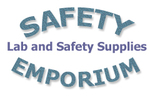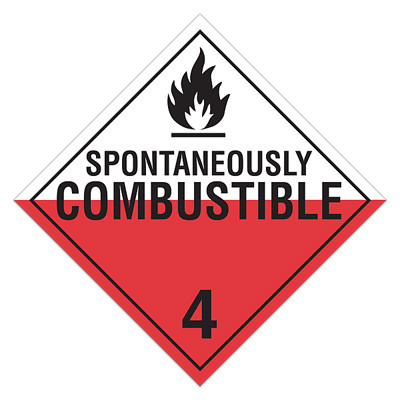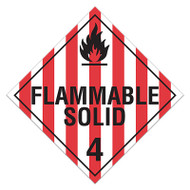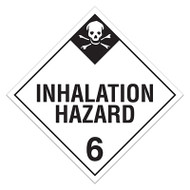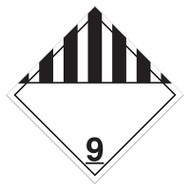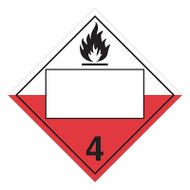- Home
- Signs + Labels
- DOT Placarding
- DOT Hazardous Material Placards, Class 4, Spontaneously Combustible
Product Description
These 10.75" x 10.75" Hazardous Materials placards conform to D.O.T. HM-206 regulations which require placards on the front, back and sides of vehicles. These placards are sold in packages of 25 or 100 only. For corresponding Class 4 Spontaneously Combustible DOT shipping labels see item # 03034.
These placards are available in three different materials:
| Material | Features |
| Polycoated Tagboard | Made from a semi-rigid paper card stock with a water resistant coating on both sides. This material is intended for single trip usage, at an economical price. Intended for use with placard holders. |
| Rigid Plastic | Manufactured on durable plastic able to withstand repeated usage under any weather conditions. The ink is applied using a silk screen process to ensure print quality and resist fading. Intended for use with placard holders. |
| Permanent Self-Adhesive Vinyl | Intended for permanent application on the transport vehicle. They are constructed with an outdoor grade 4-mil vinyl with an aggressive permanent adhesive backing. Once applied, these placards provide a permanent DOT marking solution. |
Magnetic versions are also available by special order (please inquire).
TECHNICAL NOTE 1: The US Department of Transportation's DOT Chart 15, Hazardous Materials Markings, Labeling and Placarding Guide is a terrific full-color compliance guide for placarding and labeling and is available for download from their web site.
TECHNICAL NOTE 2: In paragraph (b) of 49 CFR 173.124, a Spontaneously Combustible Material (DOT Division 4.2) is
- A pyrophoric material is a liquid or solid that, even in small quantities and without an external ignition source, can ignite within five (5) minutes after coming in contact with air when tested according to UN Manual of Tests and Criteria.
- A self-heating material is a material that through a process where the gradual reaction of that substance with oxygen (in air) generates heat. If the rate of heat production exceeds the rate of heat loss, then the temperature of the substance will rise which, after an induction time, may lead to self-ignition and combustion. A material of this type which exhibits spontaneous ignition or if the temperature of the sample exceeds 200 °C (392 °F) during the 24-hour test period when tested in accordance with UN Manual of Tests and Criteria (IBR; see § 171.7 of this subchapter), is classed as a Division 4.2 material.
See the SDS HyperGlossary entry on flammable solids as well as pyrophoric for examples and additional reading on these potentially hazardous substances.
 Loading... Please wait...
Loading... Please wait...
